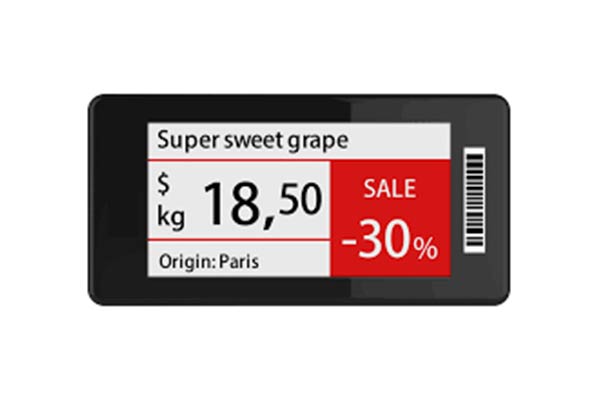An Electronic Shelf Label (ESL) is a digital display device used in retail environments to show product information on store shelves. It replaces traditional paper price tags or labels. These labels are typically powered by low-energy technologies, such as E-Ink technology, which allow them to display dynamic content like prices, product names, descriptions and promotions.

Key Features of ESL System:
- Dynamic Updates: ESLs can be updated remotely in real time, allowing retailers to change prices, stock information, or promotions across the store quickly without having to manually adjust each label.
- Energy Efficient: ESL systems use e-ink technology, which consumes very little power. The display only uses energy when the information is being changed, which makes them highly efficient.
- Improved Accuracy: By connecting to a central system, ESLs help reduce human errors in pricing, stock updates, or other product details.
- Enhanced Customer Experience: Customers can quickly view updated information, including current pricing, special offers, and product specifications, improving their shopping experience.
- Design Flexibility: ESLs can vary in size, shape, and features. Some can show just the price, while others may include barcodes, QR codes, or even additional product details.
Benefits for Retailers:
- Cost Savings: Reduces the need for printing and reprinting paper labels.
- Operational Efficiency: Streamlines the process of updating pricing or product information storewide from a central location.
- Enhanced Inventory Management: ESLs can integrate with inventory management systems, helping retailers track stock levels in real time.
Overall, ESLs are part of the growing trend of digital transformation in retail, improving efficiency and customer satisfaction.

